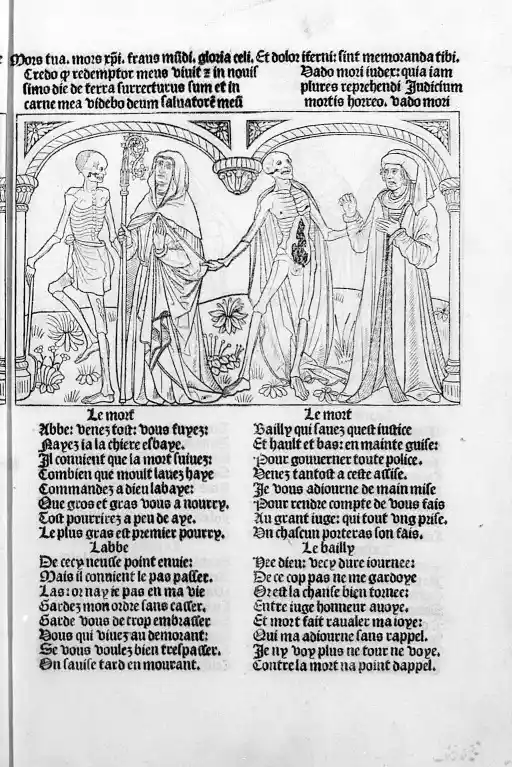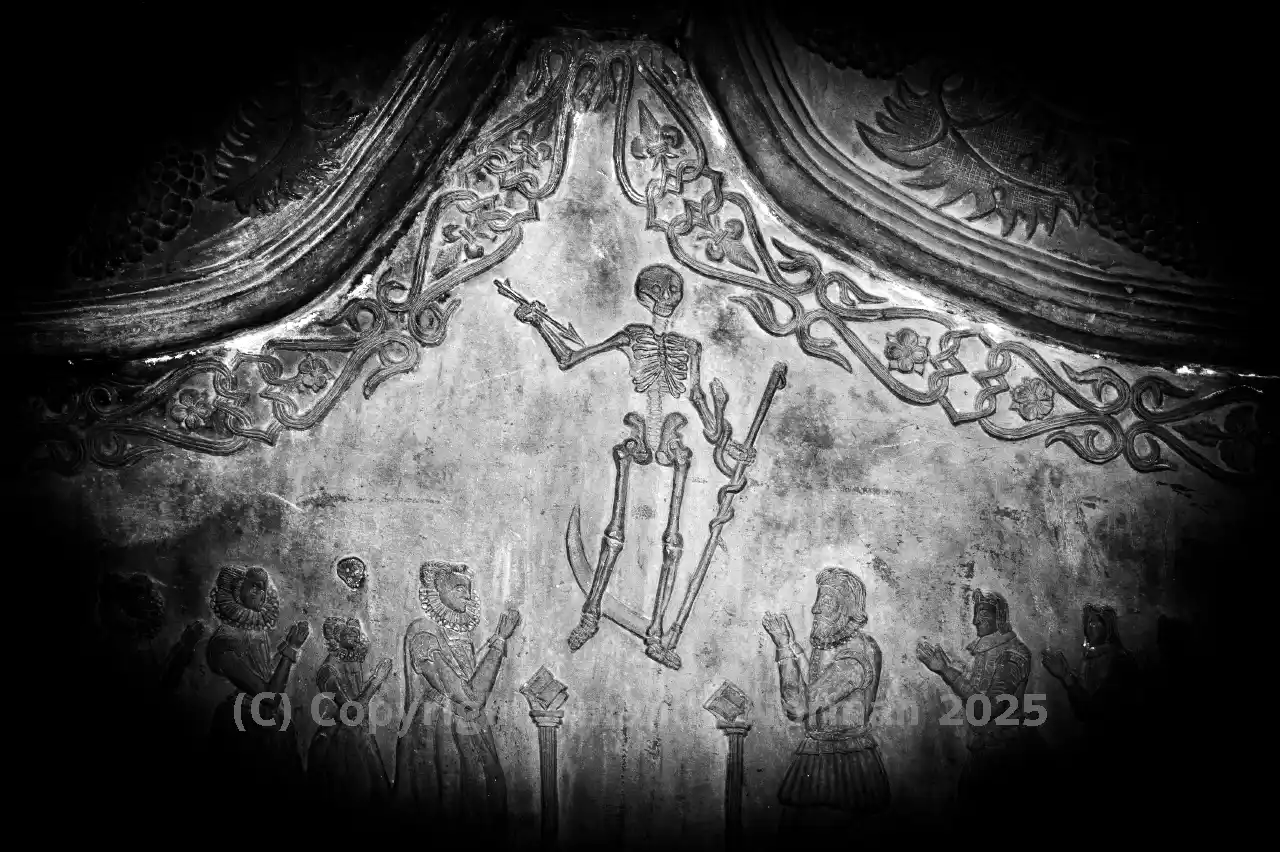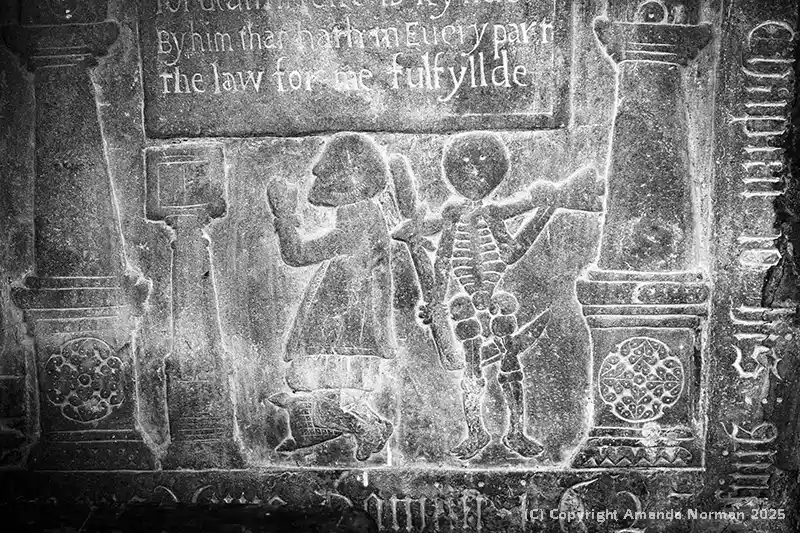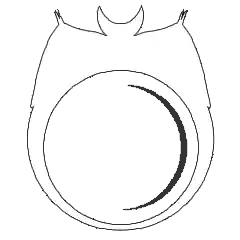The Danse Macabre translates into English as the Dance of Death. It is a medieval allegory that reminds folk about Memento Mori. No matter what one’s status is in life, the dance of death unites all. Furthermore, this can most certainly be viewed as the origins of Memento Mori.

Don’t ask me why, but images of skeletons, skulls, and crossbones always intrigue me. Indeed, I love taking photographs of those that feature in funeral art.
On my quest to learn more about the art of Memento Mori, I came across the Dance of Death.
The Dance of Death
The Danse Macabre often depicts the highest rank of medieval living. For example, the pope through to child, walking with the dead into Hell. We also see a similar hierarchy of rank in the Major Arcana and court cards of the Tarot. As you probably know, I love reading the Tarot as a form of shadow work. Yet again, another example of my life coming full circle.
One of the world’s oldest woodcuts of the Dance of Death 1455-1458, resides in Heidelberg University. Here, I’ve included the text from the initial sermon that opens it up brilliantly. Reference and further reading is available by visiting The Dance of the Dead: –
Oh, Children of the wisdom of this world
all who are still alive.
Put two words in your heart
that were heard from Christ.
The one is “come here”, the other “go away”
Thanks to the first, the good [people] have advantage
so they come into Heaven.
There they’ll receive benefit for their good
The other leads the evil [people] to the torment,
Hell, which will also last forever.
Therefore I advice you earnestly
that you avoid idle deeds.
For time is short in this life
then there’ll be “alas and alack”
through the double Death
that brings the idle [people] in distress
when – with the screeches of his fife –
he brings all into his dance.
Then the wise [men] will be forced
to spring with the fools.
Like these painted figures,
are a perfect image to mourn over.

The earliest recording of a danse macabre, dates back to sometime between August 1424 and Lent 1425. Unfortunately, this mural no longer exists due to a wall being demolished. At one time, you would have been standing in the Saints Innocents Cemetery in Paris, observing it.
I also have another interesting fact about this particular cemetery. Due to space running out, corpses were exhumed in 1786 and the bones moved to the Paris Catacombs. Reference: Danse Macabre Wikipedia
Memento Mori Death Symbols
I am wondering if my above photograph taken in Cornwall, is a depiction of a dance of death. Apologies, but I cannot remember which church contains this fine example of Memento Mori.
We can clearly see the character of Death in the middle taking aim with the dart. However, are the male and females representing a family or hierarchy of society? It most certainly does not show all types of classes to remind us that we are all the same in death. Thus, is there any political statement to this depiction? In my opinion, the answer is no.
Last but not least, it does show some excellent mortality symbols that I will explain now.
Mortality Symbols of Memento Mori
Skeleton Holding a Dart
This skeleton is representing death and it is taking aim at a male figure with his dart. Death comes to us all no matter what our status is in life. We are all the same in death.

Skeleton Holding a Scythe
A skeleton holding a scythe or sickle commonly represents the Grim Reaper. This is a symbol of death because of its use to cut down the harvest (reap). The scythe is also mentioned in the bible, revelation 14.
And another angel came out from the altar, which had power over fire; and cried with a loud cry to him that had the sharp sickle, saying, thrust in thy sharp sickle, and gather the clusters of the vine of the earth; for her grapes are fully ripe.
Snake Coiled Around a Scythe
In my opinion, I believe this snake maybe representing a caduceus. If so, perhaps the person who is no longer living was a doctor. Possibly, this person may have died following an illness.
The snake has an ability to shed its skin therefore, representing immortality and the transition of life. Additionally, in the caduceus, the coiled snake is representing healing. Please note, there is no caduceus in my photograph above however, the similarity of it coiling around a staff is present.
Legend of the Three Living and the Three Dead
Pre-dating the Danse Macabre, is the legend of the three living and the three dead.
Many frescoes and murals from the 13th century show this legend. Here we see three young gentlemen meeting three cadavers who warn them of the following: –
What we were, you are;
what we are, you will be

There where also books dedicated to ‘ars moriendi‘ (The Art of Dying), that were popular at the time due to strong religious beliefs.
As death can arrive at any moment, Memento Mori reminds the viewer of the following.
The best preparation for a good death is leading a good life and only that will ensure you reaching Heaven.
Back then, by placing final reminders upon headstones, people can ensure others follow in their path.
Further research shows that the Puritans of the 16th and 17th century had strong religious views following the Reformation in England.
The Puritan belief was that only a select few could reach heaven. Thus, the remaining will simply rot following death. Also, they believed that those buried nearest to the alter within a church, would make it to Heaven. This clearly couldn’t be sustained as the churches were running out of space. Burials began taking place outside of the church walls, which led to headstones and the artistic expression of Memento Mori.
